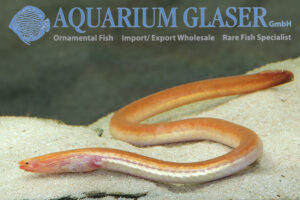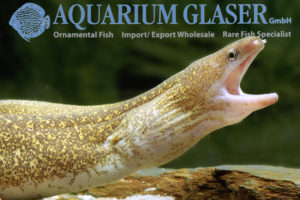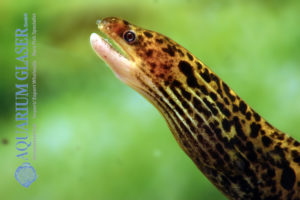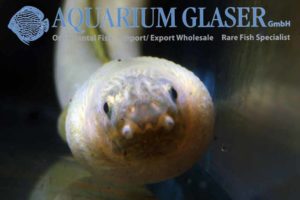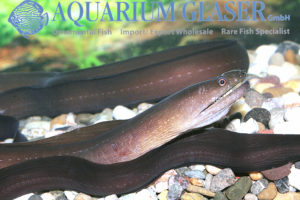We were able to import something quite special for lovers of unusual fish from India: Moringua raitaborua. This “spaghetti eel” grows to a length of 30-40 cm and is only as thick as a pencil. In fact, the representatives of the genus Moringua are not eels of the Anguillidae family, but form a family of […]
05. Eels (5)
-
-
Gymnothorax tile
For many years the up to 60 cm long moray eel species Gymnothorax tile has been sold as “freshwater moray”. It is true that G. tile can live in pure fresh water for a while (a few months) without showing any discomfort. But practice shows that this moray eel species is much more persistent in […]
-
Gymnothorax polyuranodon
This is the only real freshwater species of moray: Gymnothorax polyuranodon. Usually this species is not found over 30-40 km away from the coast, but most often in pure freshwater. The other salt tolerant species of moray, for example Gymnothorax tile, usually do not leave the tidal zone. We could import this only very rarely […]
-
Ophichthus apicalis
Eels (in the scientific sense) are usually no ornamental fish. But there is a greater number of species than one expects, and many of them are used for human consumption. We were able now to import a species of eel from Vietnam that was to the best of our knowledge never imported before alive: Ophichthus […]
-
Strophidon sathete
For the first time now we have some specimens of the largest moray eel of the world in stock: Strophidon sathete. This species originates from brackish water regions. They inhabit the very same habitats (lower reaches of rivers) as the common freshwater moray, Gymnothorax tile. Both can be kept like scats or monos: they are […]





